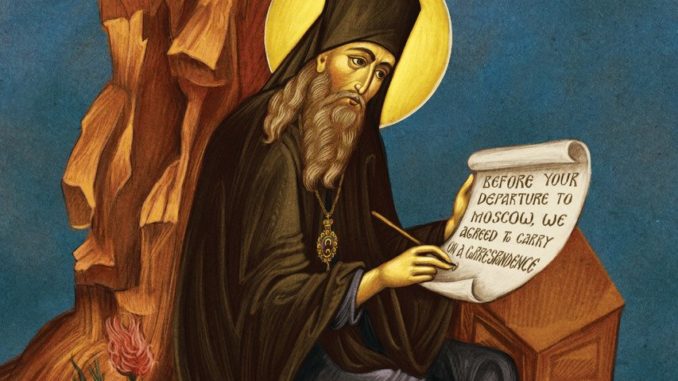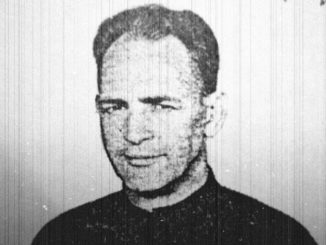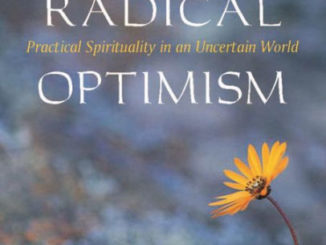
INTRODUCTION
Elijah and John, like other hermits (a monastic way of life) lived in the deserts. Jesus did not. What then is the pathway to spiritual maturity? Is it the life of the monk or otherwise? What we achieve, it must be noted, the monastic life or otherwise, is by the grace of God. God looks at the heart. What was Jesus’ first miracle? In which ceremony did he perform it? If Jesus performed a miracle in a wedding feast, thus promoting joyful celebration (though, with limitations), is this not a hint that, the monastic, celibate or ascetic life is not godlier than the wedded, celebratory life? Is monasticism the path to spirituality? Although there are good principles in the monastic life, it must be emphasized, echoed and re-echoed that only God can bring us to spirituality. From the foregoing, spirituality is not by works of righteousness but indeed by His grace alone.
1. DEFINITION OF TERMS
a. Spirituality
The term spirituality is defined as living the Christian life with a consciousness or sensitivity to religious values. Striving or aiming for perfection and making particular use of prayer are therefore very important considerations in many different Christian circles. However, it must be emphasized that spirituality assumes various forms in several Christian traditions, for instance, from the solitude of the Orthodox monks to the activism of the Pentecostals.
b. The monastic life
The monastic life refers to a way of religious life that is usually pursued within the confines of a monastery where the residents take several vows of poverty, chastity and obedience, living by the rule of the order to which they belong. Generally celibate and universally ascetic, the monastic individual separates himself or herself from general society either by living as a hermit or anchorite (religious recluse) or by joining a society of others who profess similar intentions. It is believed that although St. Anthony is viewed as the founder of monasticism, the founder of the rule of life is St. Benedict. The goal of the monastic way of life was the achievement of personal salvation with God through a continual spiritual battle with temptation. It is therefore reasonable to note that “the chief aim of the monk, therefore, is personal sanctification…” (Cross, 1975, 914).
c. Monastic spirituality
Monastic spirituality implies a single-heart solitary seeking of God, an approach to Him in response to His invitation found in Scripture, for instance, “seek ye first the kingdom of God” (Mt. 6:33). It is meant to be carried out in a lifetime and perfected or finalized in eternal life after one’s death. It is a “way of life… that requires a certain discipline to dispose oneself to meet the living God” (Monastic Spirituality 2004). It therefore flows from a belief in a God who comes to those who are disposed to listening, who will persevere in seeking God even when it seems pointless boring. The forty-eighth verse of The Rule of St. Benedict states, “do not be daunted immediately by fear and man away from the road that leads to salvation. It is bound to be narrow at the outset” (The Spirit of Benedictine Life, 2004).
2. TYPES OF THE MONASTIC LIFE
The Encyclopaedia Britannica generally divides monasticism into two, organizational or institutional, and hierarchical and status types. The organizational or institutional type could be further divided into eremitic, quasi-eremitic, cenobitic, quasi-monastic, and mendicant monks. The two subdivisions in the latter group include sacerdotal, and secondary and religious orders.
A common feature of true eremitic institutions is the emphasis on living alone on a strict contemplative life. Quasi-eremitic institutions had loose organizational structures with no external hierarchies. In cenobitic monasticism, ascetism was to be pursued in community life and in obedience. The quasi-monastic groups are Christian military orders. Strictly defined, mendicant monks are those who live by begging.
3. CAUSES OF THE MONASTIC LIFE
Several reasons could be attributed to the rise of monasticism. An important influence was the philosophical. The dualistic view of flesh and spirit, with its tendency to consider flesh and evil and spirit good- so characteristic of the Orient- influenced Christianity though the Gnostic and Neoplatonic movements. It was thought that retirement from the world could “help the individual crucify the flesh and to develop the spiritual life by meditation and ascetic acts” (Cairns, 1967, 163).
Secondly, it would appear as if some Scriptures seem to justify the monastic life. I Corinthians 7 is a case in point. Some early Church Fathers like Origen, Cyprian, Tertullian and Jerome, urged celibacy to support correct interpretation of the Scriptures. Furthermore, it is observed, Antony, probably the first monk, “in response to those words (Matt. 19:21), disposed of his property and gave the proceeds to the poor, reserving only a portion for the care of his sister” (Gonzalez 1984, 141). He even disposed of the small reserve fund that he had kept for his sister, placed her under the care of the virgins of the church, and left for the desert when a later verse “do not be anxious for tomorrow” (Matt. 6:34) moved him. Although we do not really know when the flight to the desert really began, “Antony first embarked on the life of a hermit shortly before the year 270; but it seems that he had predecessors” (Lawrence 1984, 5).
The total spiritual poverty that is demanded of Christians and to which monks respond without hesitation appears to be lovingly granted through in the Beatitudes. This is the core of the Benedictine Spirit – adhering to His teachings, ultimately following Him who has trodden the same path from His baptism in the Jordan through the trials, misunderstandings and humiliations of rejection, to His glowing obedience to His Father and the final unblinking act of sacrifice. Furthermore, thirdly, certain psychological tendencies strengthened the desire for a monastic life. In period of crisis there is always a tendency to retreat from the harsh realities. The late second and third centuries saw the beginning of civil disorder which was to become so prevalent in the later history of the Empire. It is evident therefore that “many left society for the monastery as a means of escape from harsh reality and the moral contamination of the times” (Cairns 1967, 164). Historically, there was increasing moral deterioration, especially of the upper classes in Roman society and monasticism became a haven for those in revolt against this growing decadence of the times. Geographically, the warm dry climate and the multitude of caves in the hills along the banks of the Nile were conducive to separation of the individual from society.
4. BENEFITS OF THE MONASTIC LIFE
It is a truism that there is so much evil in the best of us and so much good in the worst of us that we have to critically evaluate and learn to accommodate each other in the Christian faith. No denomination has it all right. There are strengths in the different denominations and the Christian needs to have a receptive spirit to learn from each. The monastic life is not an exception. There are several good points in this way of life worth mentioning. It is observed that monasteries “are necessary because the world is not Christian. Let it be converted, and the need for a monastic life will disappear” (Chrysostom, 1972, 52-53). History has not vindicated his hope. Monasticism has a unique testimony to the world. It is firmly believed that “monasteries were the conservators of learning and the centers of missionary and philanthropic work. The monks were the writers, preachers, philosophers and theologians of the age….” (Vos, 1994, 122). This is why Cross believes that “the monks were the chief teachers of Europe and an influential civilizing power” (Cross 1957, 104).
The life of the Church between Constantine and the Reformation reveals that “almost everything in the church that approached the highest, noblest and truest ideals of the gospel was done either by those who had chosen the monastic way or those who had been inspired in their Christian life by the monks” (Noll, 2000, 85). Douglas, Cairns and Ruark argue that “the monks were prominent in the Origenist controversies, intervened tempestuously in the fifth-century christological disputes, and became Byzantine Church’s ‘democratic front'” (Douglas, 1978, 671). Leaders of the Reformation such as Martin Luther, John Calvin, Thomas Cranner and Menno Simmons used the writings of the monks to draw support for their theology. Luther and Calvin, for instance, repeatedly consulted the works of Augustine. In fact, “it should be remembered that Luther, Erasmus, and many other critics of the papacy had monastic backgrounds” (Vos, 1994, 122).
The monastic life was not only limited to manual labour but also extended to copying MSS., teaching, art, all kinds of scholarly research and translating the Bible. A realistic summary of the influence of monastic life to Christianity could be summarized thus:
If we read the Scripture in our native languages, we benefit from a tradition of biblical translation inspired by the monk Jerome (ca. 342-420). If we sing the praises of Father, Son and Holy Spirit, we follow where the hymn-writing monks Gregory (ca.540-604) and Bernard of Clairvaux… If we pursue theology, we (are) indebted to the monks Augustine and Thomas Aquinas (ca.1225-74). If we pray for the success of Christian missions, we ask for blessing upon enterprises pioneered by monks Patrick (ca.390-ca.460), Boniface (680-754), Cyril (826-69) and his brother Methodius (ca.815-85) and Raymond Lull (ca.1233-ca.1315). If we glory in the goodness that God imparted to the created world, we follow where the friar Francis of Assisi blazed the trail…(Noll, 2000, 85).
5. SPIRITUALITY OF THE MONASTIC LIFE
From the foregoing, a question that readily comes to mind is whether the monastic way of life is really a path to spirituality? Clebsch realistically observes that Antony’s retirement from the world is, at the very least, an ambiguous retreat, for though he separates himself from the distractions and nagging pressures of ordinary human community, the wilderness to which Antony flees holds more significant challenges and dangers. When Antony finds no relief from an enthusiastic crowd during a rare visit to the city, “he assures those around him that he must contend with equal numbers – of demons – at his cell in the wilderness” (Clebsch 1980, 8).
Monasticism preaches separation from society, which lives according to the elements of this world, and from its economic, political and social problems. This generally led to the flight to the desert and the later autonomous existence of communities that care for the needs of their members. The monastic republic is Mount Athos, for instance, is a striking example of a social, self-governing life, separated from the world and even opposed to it. The thorny issue is that since everyone cannot realistically share this vocation, the monastic solution remains limited. It is not the solution for the world in its totality.
Even though the researcher is coming from a war torn land (Sierra Leone), he has come to realize that forgiveness and love are ways to demonstrate true spirituality. It must be noted that monks “headed the Inquisition and persuaded multitudes to participate in the crusades” (Noll, 2000, 140). The question is why was this so If the monastic life aimed at personal sanctification? As Christians, we must be honest to admit that “as they unfolded, the Crusades never accomplished as much good as supporters hoped, while evil consequences, unintended and unforeseen by proponents like Urban, proliferated” (Noll, 2000, 140). Even in Christianity, it is not farfetched to say that the Crusades sealed the Schism. It is unimaginable to note that people living the monastic life took part in political warfare.
The conviction of Protestants (including the researcher of this paper) about the centrality of justification by faith is bound to raise questions about whether the monastic life encouraged harmful notions concerning the possibility of salvation by works. A legitimate question worth asking is whether what the monks vowed to do did not obscure the fundamental or foundational reality of God’s grace. Paul got it right when he observed that “…it is by grace you have been saved, through faith – and this not from yourselves, it is the gift of God- not by works, so that no one can boast” (Eph.2: 8-9). Obtaining salvation by works is nothing but a legalistic approach which is consistently condemned by Scripture. The tense of the verb in Ephesians 2:8 establishes the necessity of faith in Christ as the only means of being made right with God. How central is the teaching of grace? This is a question the someone living the monastic life would have to struggle with.
Does the ascetic privation of the body by the monk affect the true seat of sinfulness? In response, it is vehemently argued that “the bent of the heart, rather than the mere disposal of the body, is the key matter in godliness” (Noll, 2000, 103). In fact, an issue in our recently concluded module was sex and spirituality. Although Catholics believe that sex is only for procreation, the Protestant views sex between husband and wife for pleasure also as true spirituality. Even Bro. Lawrence was honest enough to admit some of the problems of a type of monastic life. It is interesting to note that Brother Lawrence began to doubt the wisdom of his decision to live in the desert, wishing instead to live within a Christian brotherhood… Members of the group could edify and exhort one another, protecting themselves against the changeableness of their individual whims (Lawrence, 1982, 78).
CONCLUSION
In all fairness to monasticism, the institution “owes its origin to the desire of leading a life of perfection in greater security than is normally possible in the world” (Cross 1975, 914). Monks for more than a thousand years sustained a lot of noble qualities in the Church. It is reasonable to note that the monastic life, “though never perfect, always in need of reform, and occasionally sunk in corruption- remains today, more than seventeen hundred years after Antony went into the desert, a guide and inspiration to large sections of the Church” (Noll, 2000, 104). However, it would be farfetched to state that monasticism is a path to spirituality. It is incontrovertible that there are good principles in the monastic life. This notwithstanding, one must hasten to note that only God can bring us to spirituality. It is not by works of righteousness but indeed by His grace alone. The environment is really not the issue. I believe that the inside of the man is the real issue. The philosophers believe that if a man is sick, he will still be at the same place if you were to remove him from the gutters to the palace. Why? The answer is that he carries his disease with him. Did Jesus avoid non-Christians? No. What does He mean when He observe that though the Christian is in the world, he is not of it? The researcher observes that these words suggest or recommend a very unique ministry. This ministry seems to show itself above the desert and the city, since it is called to surpass every form in order to express itself everywhere and in all circumstances. How can monks be given birth to or monasteries be populated without the life on the other side of the monastery? It is suggested that there is only one spirituality for all without distinction in its demands, whether of the bishop, monk or layperson. St. Seraphim left the extreme practices of the hermits and returned to the world. He was no longer a monk retired from the world nor a man living among people. He was both, and surpassing both, he was essentially a witness to Biblical spirituality.
WORKS CITED
Beaufort, Lawrence. The Practice of the Presence of God. New Kensington : Whitaker House, 1982.
Cairns, E.E. Christianity Throughout the Centuries. Grand Rapids, Michigan : Zondervan Publishing
House, 1967.
Chrysostom, John. Her Nature and Task, in Bible, Church Tradition : An Eastern Orthodox View,
Collected Works, Vol. 1. Maryland : Norland, 1972.
Clebsch, W.A. The Life of Antony and the letter of Marcellinus. New York : Paulist Press, 1980.
Cross, F.L., The Oxford Dictionary of the Christian Church. London : Oxford University Press, 1975.
Douglas, J.D. E.E. Cairns and James E. Ruark, The New International Dictionary of the Christian
Church. Grand Rapids, Michigan : Zondervan Publishing House, 1978.
Encyclopaedia Britannica, 1989 ed. s.v. Sacred Offices and Orders.
Gonzalez, J.L. The Story of Christianity : the Early Church to the Dawn of the Reformation, Vol. 1
Cambridge : Harper and Row Publishers, 1984.
Lawrence, C.H. Medieval Monasticism : Forms of Religious Life in Western Europe in the Middle Ages.
London : Longman, 1984.
Monastic Spirituality. Available [online]: http://www.christdesert.org/noframes/
scholar/monastic_spirituality.html. Accessed 20th September 2004.
Noll, Mark A. Turning Points : Decisive Moments in the History of Christianity. 2nd ed. Grand Rapids,
Michigan : Baker Academic, 2000.
The Spirit of Benedictine Life. Available [online]: http://www.christdesert.org/noframes/
scholar/benedict/benedict_spirituality.html. Accessed 20th March 2004.
Vos, H.F. Introduction to Church History. Nashville : Thomas Nelson Publishers, 1994.
Proudly WWW.PONIREVO.COM



